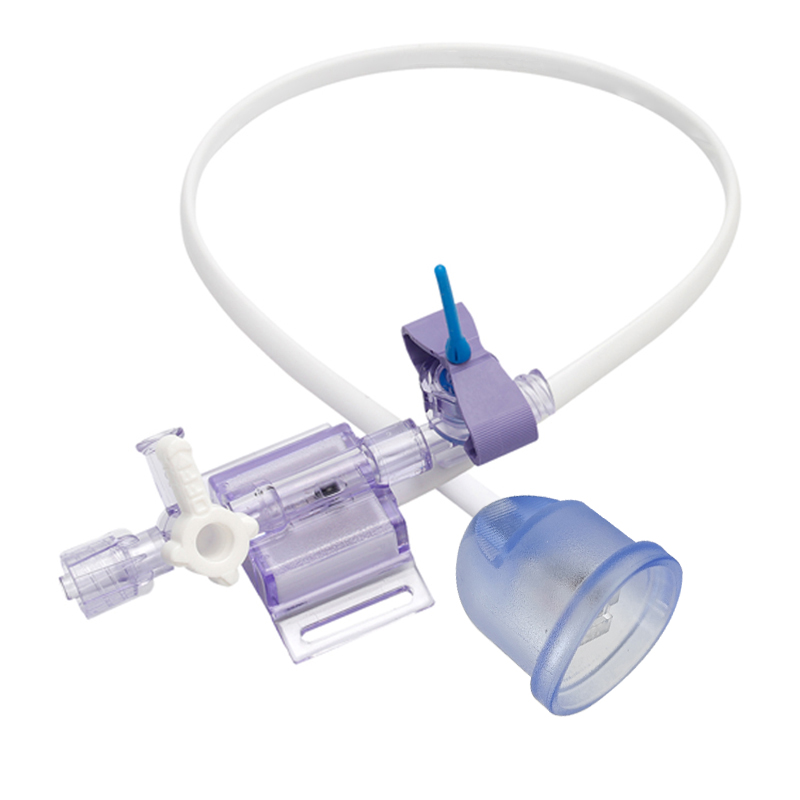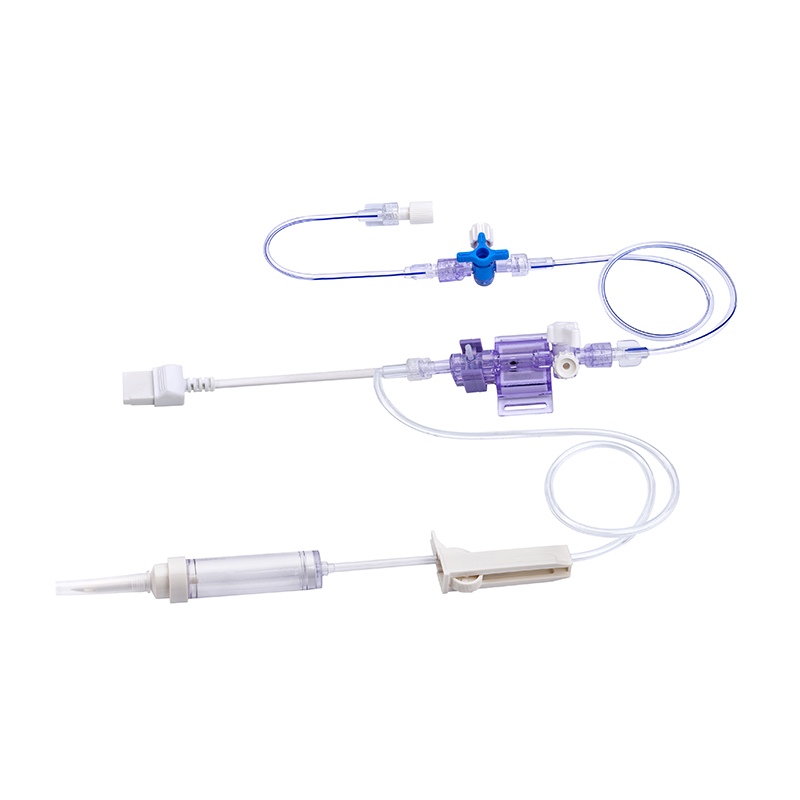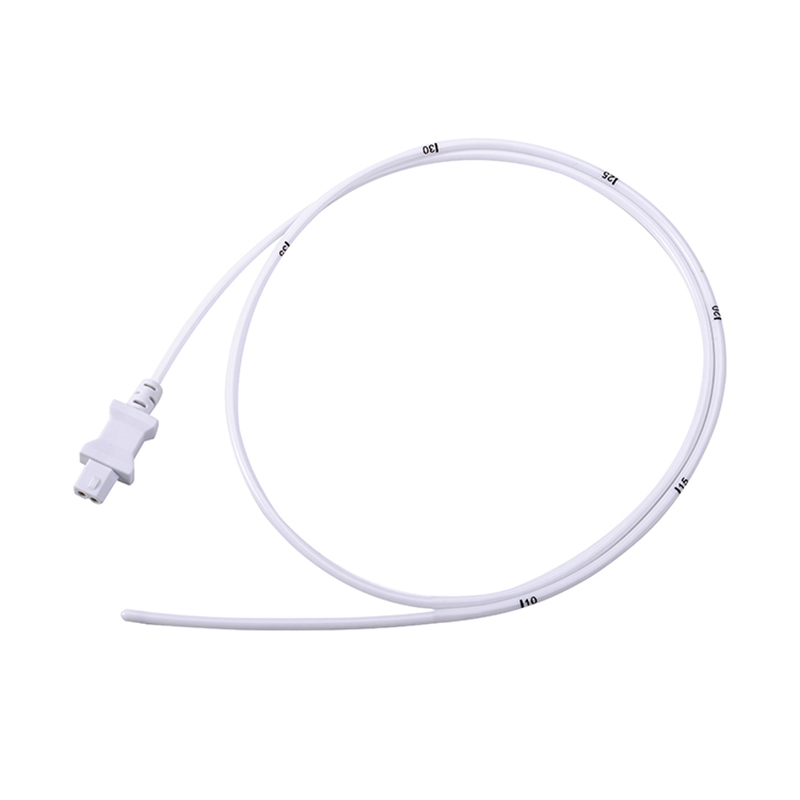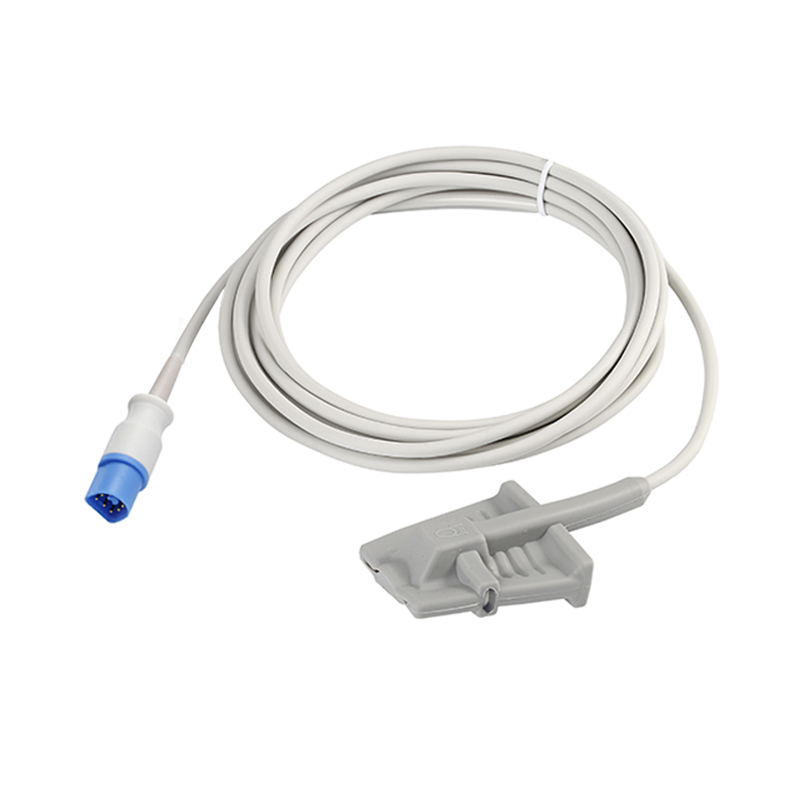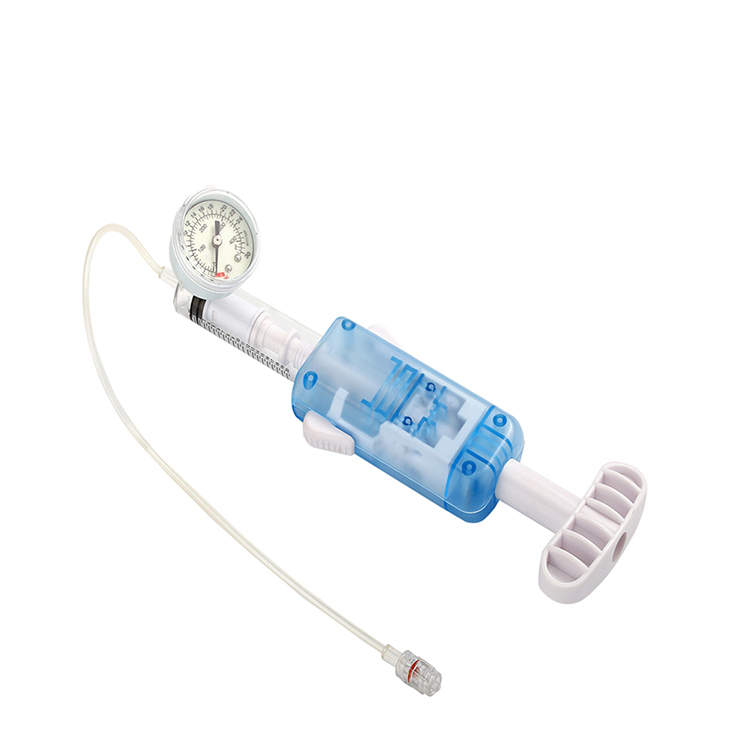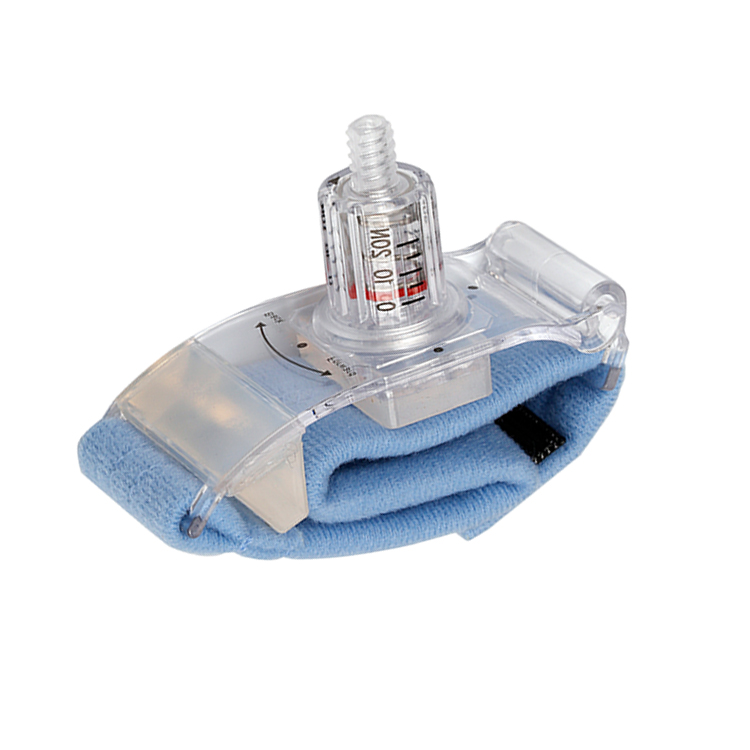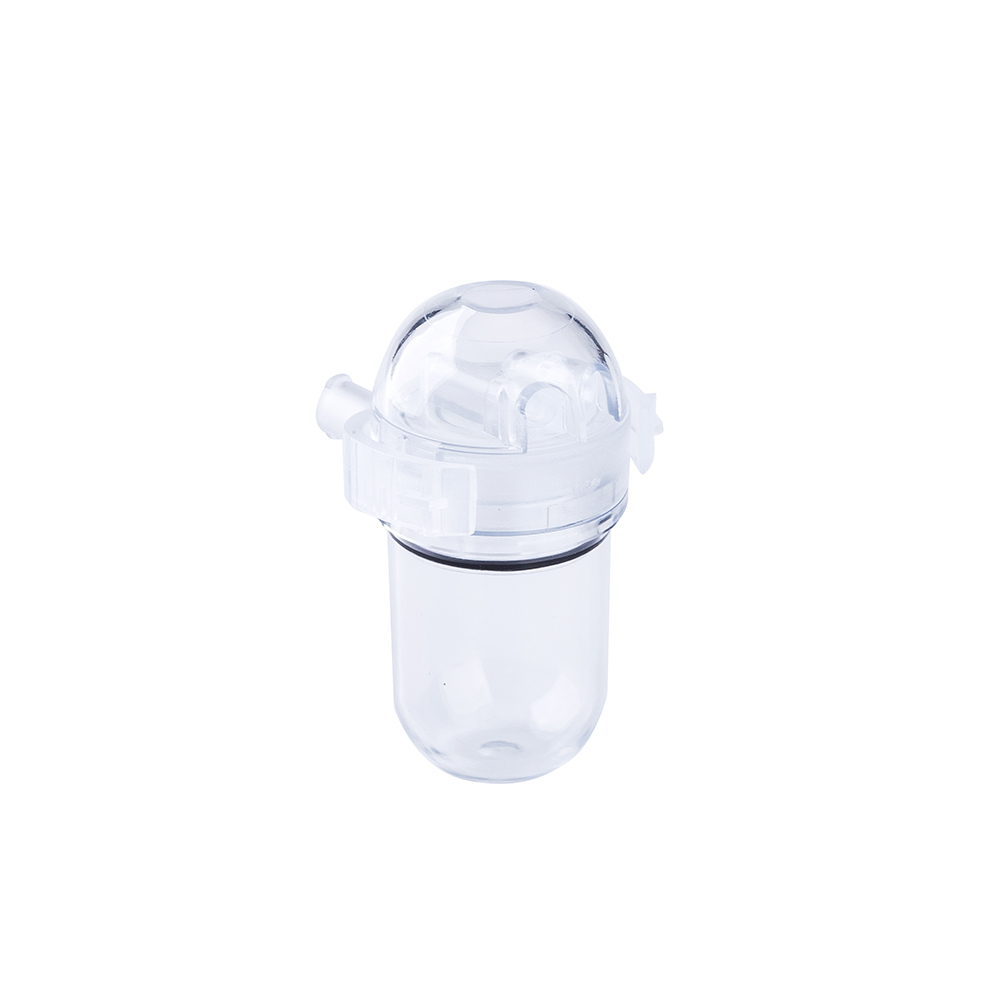Philips compatible adult soft reusable SPO2 probes
PRODUCT INTRODUCTION
Pulse oximetry Sp02 refers to the percentage value of blood oxygen content and blood oxygen volume. Sp02 is well-established as a noninvasive, rapidly responsive, safe, and reliable continuous monitor. It is now widely used in anesthesia, surgery, and PACU and ICU. According to the spectral characteristics of oxyhemoglobin (Hb02) and reduced hemoglobin (Hb) in the red light and infrared light regions, it can be seen that the absorption of Hb02 and Hb in the red light region (600 ~ 700 nm) is very different, the degree of light absorption and light scattering of blood greatly depends on the oxygen saturation: while in the infrared spectral region (800 ~ 1000 mm), the absorption is quite different, and the degree of light absorption and light scattering of blood are mainly related to the hemoglobin content. Therefore, the contents of Hb02 and Hb are also different in different absorption spectra. Therefore, the blood in the blood catheter of oxygen saturation meter can accurately reflect the oxygen saturation of bleeding according to the contents of Hb02 and Hb. The ratio of blood reflections near 660 nm to 900 nm (p 660/900) most sensitively reflects changes in bleeding oxygen saturation, and this ratio is also used as a variable in clinical general oximeters. In the light pathway, light is absorbed by tissues such as skin, soft tissue, venous blood, and capillary blood in addition to arterial hemoglobin.
However, when incident light passes through the fingers or earlobe, light can be absorbed simultaneously by pulsatile blood and other tissues, but the intensity of light absorbed by the two is different, and the intensity of light absorbed by pulsatile arterial blood (AC) changes with changes in arterial pressure waves. While the light intensity (DC) absorbed by other tissues does not change with pulsation and time, the light absorption ratio R in the two wavelengths can be calculated. R = (AC660/DC660)/(AC940/DC940). R is negatively correlated with Sp02, and the corresponding Sp02 value can be obtained from the standard curve according to the R value.



Product Specification
| Measurement Wavelengths and Output Power | Red: 660±5nm @ 2.0 mw maximum average Infrared: 905nm±5nm @2.0 mw maximum average Oxygen Saturation Declared |
| Accuracy Range | ±3 % of 70%~79% SpO2; ±2% of 80%~89% SpO2; ±1% of 90%~100% SpO2 |
| Accuracy | ±3 bpm of 150 bpm ~245 bpm; ±2 bpm of 60 bpm~149 bpm; ±1 bpm of 30 bpm~59 bpm; |
| Response time | ≤30s |

